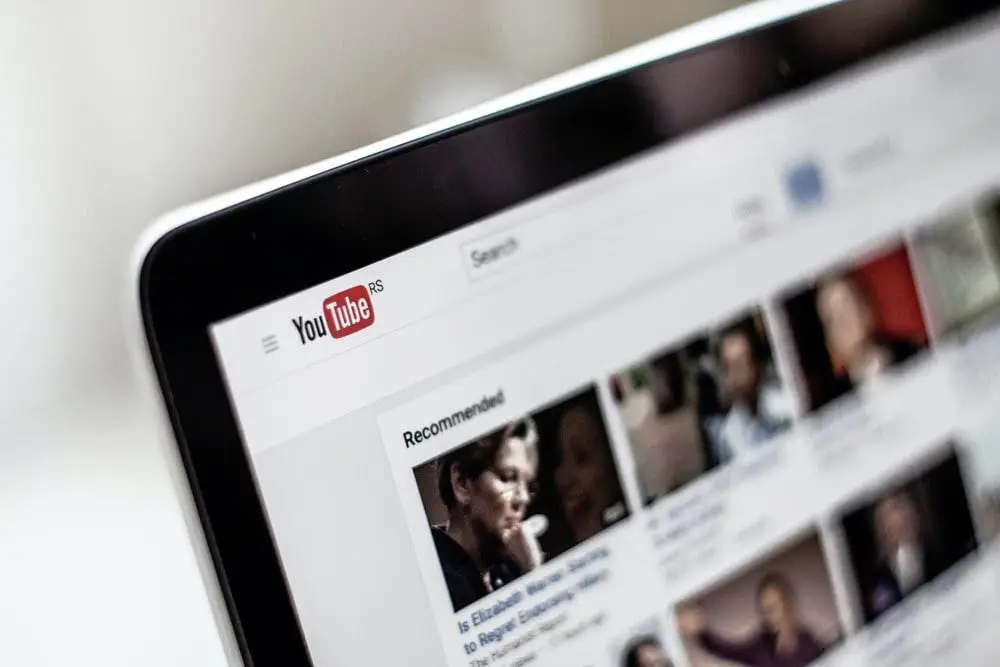As a savvy eCommerce business owner, you probably already have a killer digital marketing strategy in place. We’re sure you’d agree there’s no doubt about it, a video is no longer a nice option for your digital marketing strategy, it is essential. According to Google, 6 out of 10 people would rather watch videos online than on their televisions. Mobile video consumption increases at a steady rate of 100% per year, and by 2022, online videos will make up more than 82% of all consumer internet traffic – 15 times higher than it was in 2017. (Cisco)
If you don’t have video incorporated into your digital marketing strategy by now, then you should really start thinking about it. A great place to start, and this might seem obvious, is YouTube! However, you might be surprised to hear that eighty-six percent (86%) of small businesses that advertise on social media use Facebook – at least one-third more than those that advertise on YouTube (51%), Instagram (47%), or Twitter (41%). (Hootsuite) The social media giant has more than 2 billion monthly users and ranks as the second most popular site ON THE WEB after Google (Alexa). People are consuming 50% more content on the platform year over year because it offers the type of content they crave the most.
Hence, YouTube presents a huge opportunity for small business owners and marketers to get in front of the target audience. Let’s take a look at some more reasons to advertise on YouTube:
Reasons To Advertise on YouTube
Digital Marketing & Massive Reach
The most tempting feature of YouTube is the potential reach of the platform. It’s the 2nd most popular search engine after Google, and the 3rd most visited platform after Google and Facebook. Every minute, 300 hours of video are uploaded on this platform.
Serving as a social media network and a search engine, YouTube is programmed to reach an incredibly wide range of users, mostly belonging to the 18-49 age groups.
Thus, if you’re looking to maximize your audience reach within those demographics, YouTube is an ideal platform to incorporate into your video strategy.
Tremendous Targeting Capabilities
To be effective and drive conversions, your brand message must reach your core target market. That’s why targeting is more important than overall reach. From demographic targeting to contextual placements and keyword targeting, YouTube possesses extensive targeting capabilities that help you reach the exact audience.
You can target your ads by gender, age, and parental status. Contextual placements allow you to broadcast your ads on websites, channels, and videos with high-conversion potential and attract audiences. You can place your ad right on your competitors’ videos and obtain customers from there.
If you want the right users to see your ads, you can also target by interest, keywords, topics, and remarketing. In other words, YouTube allows you to target high-intent users at various stages of the customer life-cycle.
Valuable Ad Metrics
Evaluating your advertising strategy is extremely important to measure the success of your campaign, regardless of the platform you use. YouTube offers up-to-date and easy to track ad metrics. Google AdWords provides information about costs, budget, and views, while the Analytics tab on your YouTube account gives more comprehensive insights into viewers.
Depending on the pricing and format you select for your ad, you get access to valuable data such as reach, views, engagements, clicks, and frequency. In addition, quartile reporting allows you to track video viewership. For instance, it helps you track the number of views that reach certain points in the video, such as 25%, 50%, 75%, and 100%.
Using these metrics, you can adjust your advertising strategy, such as where to place your ads and refining the content to meet your advertising goals.
Incredibly Low Pricing
YouTube advertising is very affordable. You pay $0 to create your YouTube channel, and ads are also quite cheap. TrueView ads, for instance, only charge you when a user watches at least 30 seconds or the entire ad, whichever comes first. This means you don’t pay for every impression–you only pay for those that keep the users watching.
Considering YouTube’s affordability, massive reach, and extraordinary targeting, there is no doubt that this is an incredible marketing platform as compared to other channels. For instance, if you consider TV ads, you’ll need to spend tons of money, get limited reach, and have no significant targeting.
However, you need to remember that while some ads cost you not more than a few dollars, you will need to spend money to make your campaign a real success.
Viewers with High Buying Intent
Among the most tempting reasons to advertise on YouTube is the high-buying intent of users. Video content generates conversion rates higher than any other type of content. This is because animation naturally attracts the human eye and a large number of viewers come with a buying intent.
An Animoto study highlighted that three types of videos are the most popular among customers: product or service videos, instructional videos, and humorous videos. Amazingly, 96% of consumers feel that videos influence their buying decisions, while 84% of Amazon customers demand more tutorials, installation videos, and product usage videos.
YouTube presents your ads to users with high-buying intent in an unprecedented way. Given that you target the viewers well, you should be able to generate qualified leads from people in the final stages of the buyer journey.
Now that you’re aware of the reasons to advertise on YouTube, let’s take a look at the different types of YouTube ads that you can use:
Broadly speaking, there are two types of YouTube Ads, namely skippable and non-skippable ads. Let’s discuss them separately:
Skippable Ads
Also known as TrueView ads, skippable ads are those that won’t force viewers to watch the ad videos. Having no limit on how long your ad can be, TrueView video content ads are further categorized into in-display and in-stream ads.
In-Stream Ads
These are pre-roll ads that are delivered at the beginning of a YouTube video. If you’re a YouTube user, you must be aware of how common these are. You can use in-stream ads to send traffic to your website as well as boost your YouTube subscribers. A large number of subscribers means you have a loyal audience that will consistently engage with your YouTube ads. Let’s take an example to examine the effectiveness of in-stream ads.
A supplier of screen protectors called Zagg used a YouTube in-stream ad campaign to improve the conversions of its product pages by 65% to 70%. On its product-specific YouTube channel, the organization also managed to generate 13 million views.
What produced these extraordinary results was their on-spot targeting. They knew the target audience inside out so their campaigns were focused on certain demographics and specific geographical locations. To achieve similar results, you’ll need to develop a clear understanding of your customers. Create a buyer persona for your brand and use it to choose your targeting options when creating a YouTube ad.
Besides product videos, Zagg’s campaign also focused on indirect selling. Since iPhone users are particularly concerned about scratches on the device screen, such as when it’s in a purse, they created a video showing a key scratching an iPhone. They created more similar videos, conveying how effectively their items can address the common customer pain points. With this tactic, viewers immediately found the value of items the company offered. The next steps were simple: click on the link to the product page and complete the purchase.
Hence, the key is to target your ads well and make sure that your videos convey value as clearly as possible. When your ads connect well with the target audience, your in-stream ads will drive conversions.
In-Display Ads
These are ads shown as video overlays, in search listings, or in the related videos section. There’s also an option called ‘On partner websites’ but it’s not open to those advertising only on YouTube. In-display ads aren’t as popular as in-stream ads but since the platform is the 2nd largest search engine after Google, it can still generate results for your campaign.
Unlike Google, YouTube is not too expensive when it comes to advertising on search listings. You’ll end up paying considerably lower for each view and this isn’t going to be junk traffic. You should be able to generate a decent view-through rate, which is the proportion of users who watched the entire video of the total number of users who clicked on the video. A great strategy to optimize your in-display ads is to create the ads specifically for relevant keywords.
Your keyword selection plays a critical role here. For instance, if you sell ties and there a lot of searches for ‘how to tie a tie knot’ and you have no video ad that matches this keyword, create one at your earliest. Using this video as an in-display ad means that whenever someone enters that query in the YouTube search engine, this video will appear in the search results.
While relevance is important for all types of YouTube ads, in-display ads appear to be the most relevant as their titles match the searched keywords and they appear at the top of the search listings. Given their high relevance, if users find the ads in listings, they will prefer the ad over the actual video content they searched for.
These viewers are highly likely to subscribe to your channel and eventually become your customers. The simplest way to run a keyword search is to use the YouTube search engine itself. Enter the keywords most relevant to your business and check the suggested keywords in the dropdown before hitting ‘enter’. Picking a high-search term related to your offering can’t be easier than this.
In-display ads can also be used to build a following for your YouTube channel. However, you’ll need to add a lot of engaging content for that. When viewers like your in-display ad, they’ll want to check out other content you’ve posted before following your channel. The more videos they watch on your channel, the more deeply engaged they will become with your brand.
Therefore, before advertising with the in-display ad format, consider posting video content on your YouTube channel. One great way to get started is to post a welcome video that serves a teaser or trailer for subsequent content. The welcome video should immediately play on the channel when someone clicks on your channel link.
It’s obvious that anyone who visits your channel wants to know more about your brand and offerings. Thus, your welcome video can play a significant role in letting the visitors know what your brand is all about. Without more video content on your channel and a welcoming video, visitors may decide not to subscribe to your channel. You may get a video view, like, and even a share of a video but nothing on future content just because your channel had no more engaging content.
When you make your welcoming video, keep it short, perhaps not more than a minute. Besides introducing your brand, use your welcome video to give reasons to people to follow your channel and share the benefits of using the channel to satisfy their content needs. Be sure to tell them exactly what you want them to do, such as hit the subscribe button and share the channel on other social media platforms.
Use the description section to share important business information, including links to your website and your business profile on other social media platforms. Include a clear CTA in the description too just as you did in the video.
To confirm to visitors that they’ve arrived at the right place, brand your YouTube channel. Think of it as a landing page of your website that people visit after consuming your content elsewhere. Branding and populating your YouTube channel and including a welcome video will accelerate subscriber growth and help you make the most of your ad spend.
Non-Skippable Ads
These are ads that force people to view the content. Like in-stream ads, these are pre-roll ad campaigns, but they cannot be longer than 15 to 20 seconds. Users are required to watch these ads to access the video they’re trying to watch. Given the forceful nature of these ads, they do have a bad reputation and prompt users to abandon the video.
However, if you target your non-skippable ads well and genuinely deliver value through the ad content, they can get better engagement.
Final Word
To sum up, YouTube ads offer a new opportunity to get your brand in front of your target audience. After going through the top reasons to advertise on YouTube, you must be excited to broadcast your first ad campaign on the platform! However, here is something that you should remember–when you are advertising on the platform, make sure your ads are relevant and useful. After all, the purpose of all ads is to add value!
Contact the Fully Accountable team or for immediate assistance, schedule a 30-minute strategy call with our eCommerce accounting experts.


